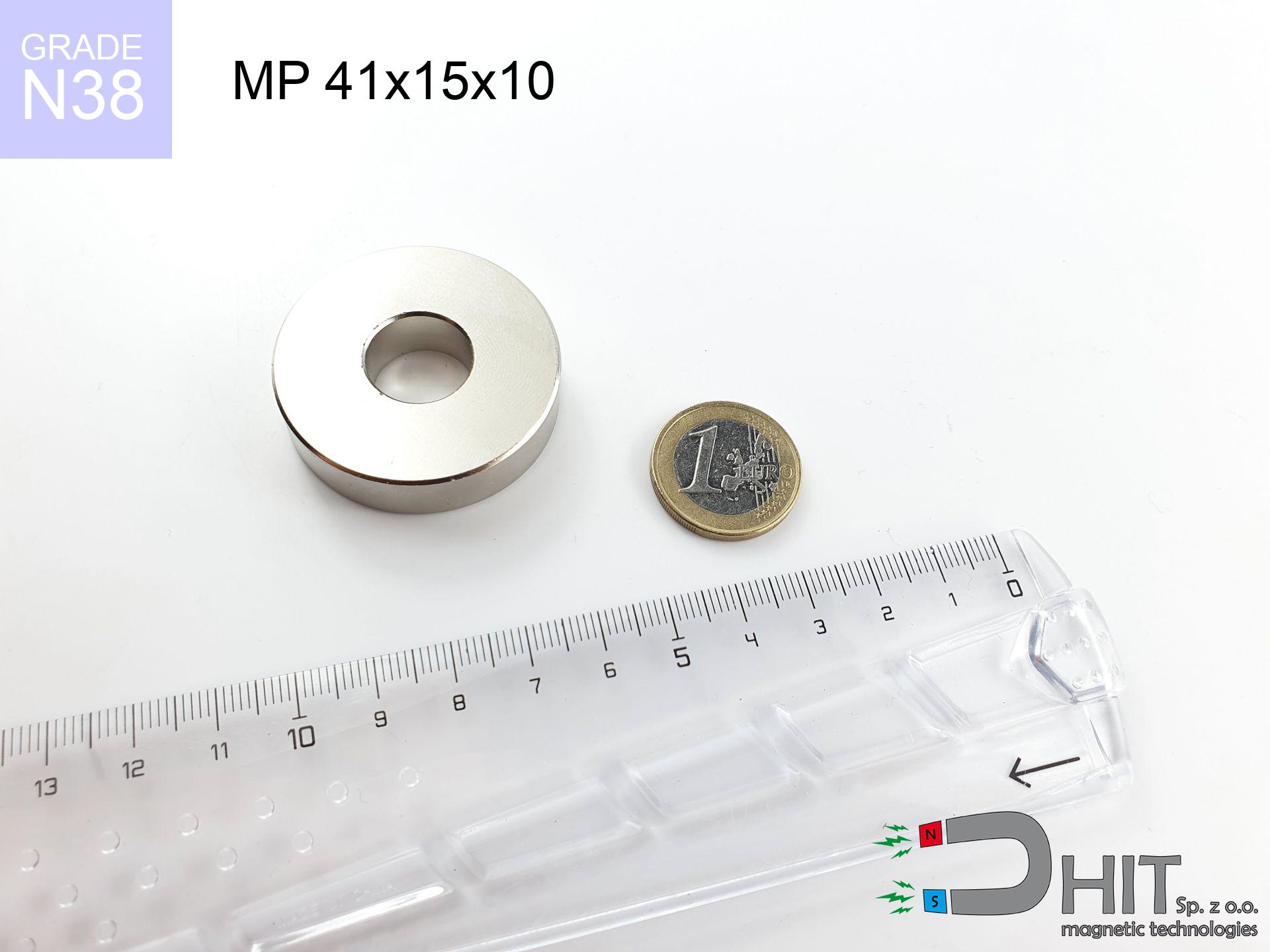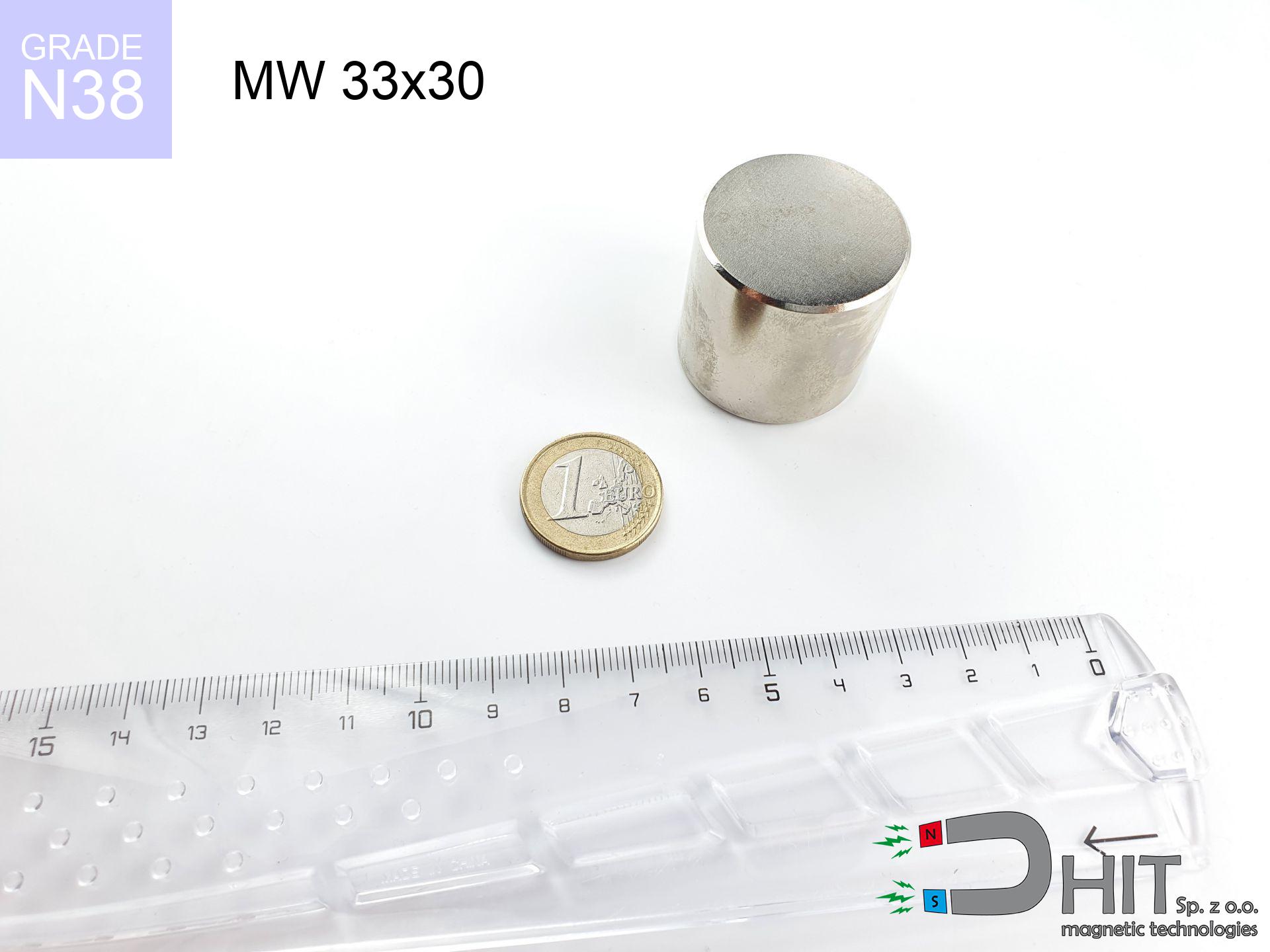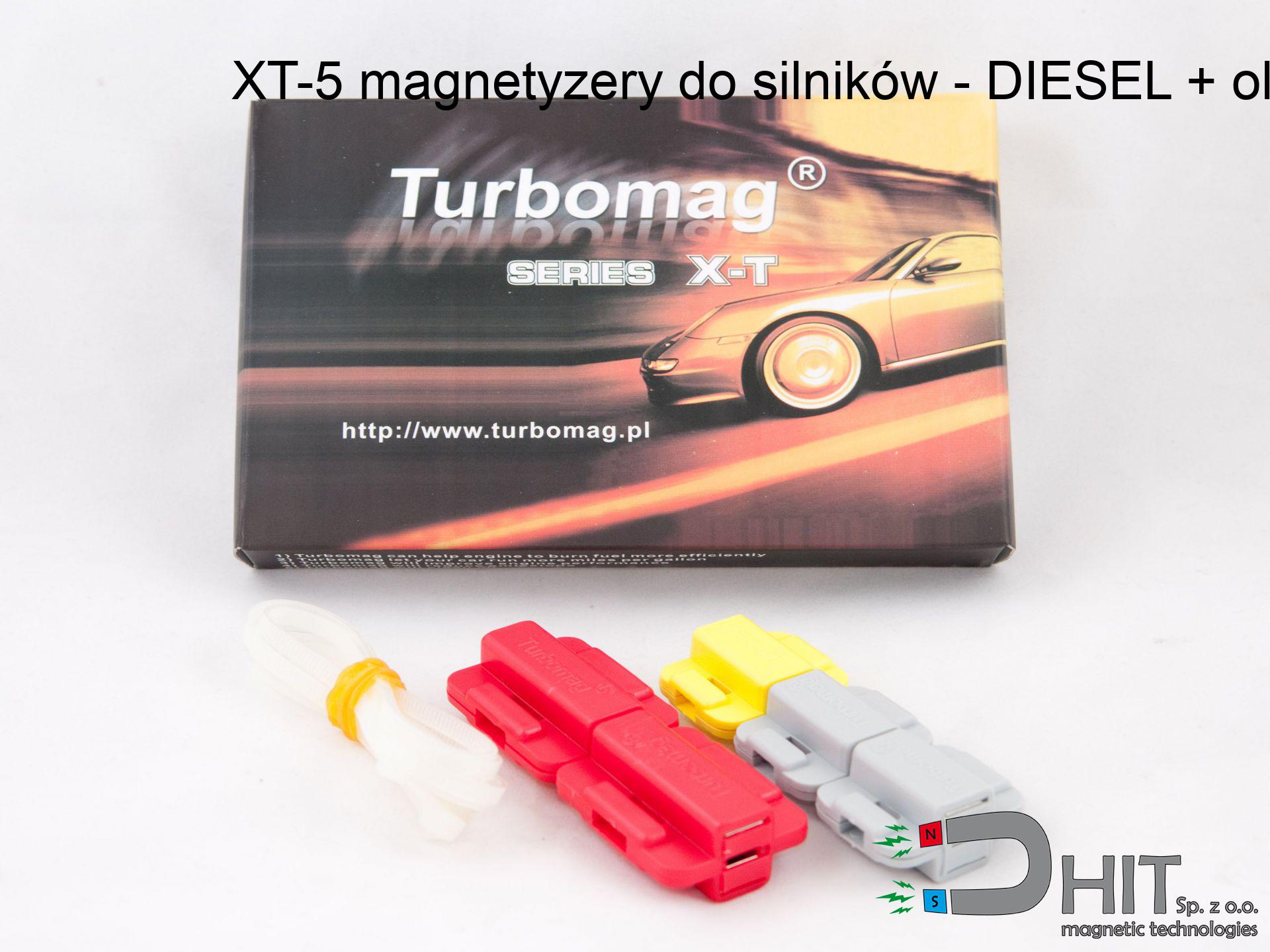MP 41x15x10 / N38 - ring magnet
ring magnet
Catalog no 030200
GTIN: 5906301812173
Diameter [±0,1 mm]
41 mm
internal diameter Ø [±0,1 mm]
15 mm
Height [±0,1 mm]
10 mm
Weight
61.26 g
Magnetization Direction
↑ axial
Load capacity
8.55 kg / 83.85 N
Magnetic Induction
223.83 mT
Coating
[NiCuNi] nickel
50.00 ZŁ with VAT / pcs + price for transport
40.65 ZŁ net + 23% VAT / pcs
bulk discounts:
Need more?Want to negotiate the price?
Call us +48 22 499 98 98 or write via form on the contact page. Test the magnet's power with our power calculator.
Orders placed by 14:00 are shipped the same day.
MP 41x15x10 / N38 - ring magnet
Magnetic properties of material N38
Physical properties of NdFeB
Shopping tips
Advantages and disadvantages of neodymium magnets NdFeB.
Apart from immense strength, neodymium magnets have the following advantages:
- They do not lose their strength (of the magnet). After about 10 years, their power decreases by only ~1% (theoretically),
- They protect against demagnetization caused by external magnetic field very well,
- Thanks to the shiny finish and nickel, gold, or silver coating, they have an aesthetic appearance,
- They exhibit extremely high magnetic induction on the surface of the magnet,
- Thanks to their high temperature resistance, they can operate (depending on the form) even at temperatures up to 230°C and above...
- Thanks to the flexibility in shaping and the ability to adapt to specific requirements – neodymium magnets can be produced in many variants of shapes or sizes, which amplifies their universality in usage.
- Significant importance in modern technologies – are utilized in HDD drives, electric drive mechanisms, medical equipment and very highly developed apparatuses.
Disadvantages of neodymium magnets:
- They are prone to breaking as they are fragile when subjected to a strong impact. If the magnets are exposed to impacts, it is suggested using magnets in a steel housing. The steel housing in the form of a holder protects the magnet from impacts and simultaneously increases its overall strength,
- High temperatures can reduce the strength of neodymium magnets. Typically, after heating above 80°C, most of them experience a permanent reduction in strength (although it is dependent on the form and size). To prevent this, we offer special magnets marked with the symbol [AH], which are highly resistant to high temperatures. They can operate even at temperatures up to 230°C, making them an ideal solution for applications requiring high-temperature operation,
- They rust in a humid environment - during outdoor use, we recommend using waterproof magnets, such as those made of rubber or plastic,
- The use of a cover or a magnetic holder is recommended due to the limited possibilities of manufacturing threads or complex shapes in the magnet
- Health risk to health from tiny fragments of magnets pose a threat, in case of ingestion, which becomes significant in the aspect of protecting young children. Furthermore, miniscule components of these magnets can be problematic in medical diagnosis in case of swallowing.
Handle Neodymium Magnets with Caution
Neodymium magnets can become demagnetized at high temperatures.
While Neodymium magnets can lose their magnetic properties at high temperatures, it's important to note that the extent of this effect can vary based on factors such as the magnet's material, shape, and intended application.
Do not give neodymium magnets to children.
Remember that neodymium magnets are not toys. Be cautious and make sure no child plays with them. They can be a significant choking hazard. If multiple magnets are swallowed, they can attract to each other through the intestinal walls, causing severe injuries, and even death.
Magnets made of neodymium are particularly fragile, which leads to damage.
In the event of a collision between two neodymium magnets, it can result in them getting chipped. Despite being made of metal as well as coated with a shiny nickel plating, they are not as hard as steel. In the case of a collision between two magnets, there can be a scattering of small sharp metal fragments in different directions. Protecting your eyes is essential.
Neodymium magnets are the most powerful magnets ever created, and their power can surprise you.
Make sure to review all the information we have provided. This will help you avoid harm to your body and damage to the magnets.
Dust and powder from neodymium magnets are highly flammable.
Do not attempt to drill into neodymium magnets. Mechanical processing is also not recommended. If the magnet is crushed into fine powder or dust, it becomes highly flammable.
Neodymium magnets should not be near people with pacemakers.
Neodymium magnets generate strong magnetic fields. As a result, they interfere with the operation of a pacemaker. This happens because such devices have a function to deactivate them in a magnetic field.
Neodymium magnets can attract to each other due to their immense internal force, causing the skin and other body parts to get pinched and resulting in significant swellings.
If have a finger between or on the path of attracting magnets, there may be a severe cut or a fracture.
Never bring neodymium magnets close to a phone and GPS.
Magnetic fields interfere with compasses and magnetometers used in navigation for air and sea transport, as well as internal compasses of smartphones and GPS devices.
Keep neodymium magnets away from TV, wallet, and computer HDD.
The strong magnetic field generated by neodymium magnets can damage magnetic media such as floppy disks, video tapes, HDDs, credit cards, magnetic ID cards, cassette tapes, or other devices. They can also damage videos, televisions, CRT computer monitors. Remember not to place neodymium magnets close to these electronic devices.
The magnet coating contains nickel, so be cautious if you have a nickel allergy.
Studies clearly indicate a small percentage of people who suffer from metal allergies such as nickel. An allergic reaction often manifests as skin redness and rash. If you have a nickel allergy, you can try wearing gloves or simply avoid direct contact with nickel-plated neodymium magnets.
Warning!
To illustrate why neodymium magnets are so dangerous, see the article - How very dangerous are powerful neodymium magnets?.






![SM 25x175 [2xM8] / N42 - magnetic separator SM 25x175 [2xM8] / N42 - magnetic separator](https://cdn3.dhit.pl/graphics/products/sm-25x175-2xm8-fux.jpg)


